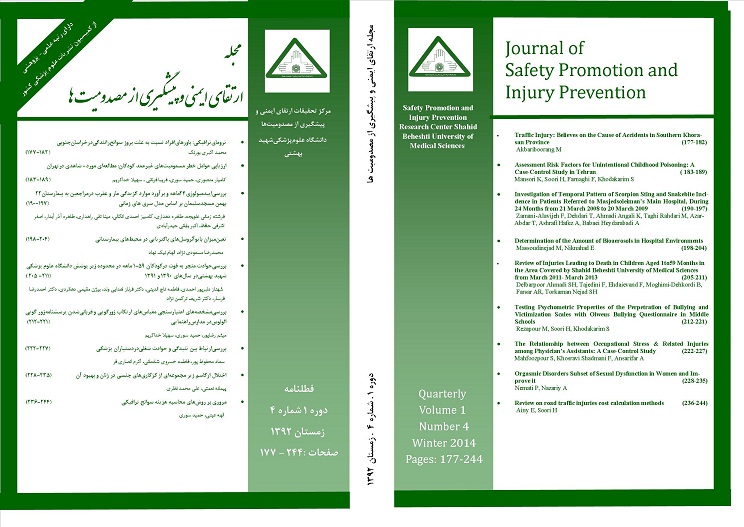..
ارتقای ایمنی و پیشگیری از مصدومیت ها,
دوره 1 شماره 4 (2014),
20 فروردین 2014
,
صفحه 212-221
https://doi.org/10.22037/meipm.v1i4.6097
چکیده
Background and Objective: Bullying behavior is one of the growing problems in many schools. Availability and access to a valid and reliable instrument for measuring this behavior is necessary for intervention and to reduce side effects. Therefore, this study has been carried out with middle school students with the aim of validating the bullying perpetration and victimization scales of Olweus Bullying Questionnaire.
Materials and Methods: The study was conducted on 830 public middle school students in Mazandaran province. The content validity was calculated from CVR. To assess structure, exploratory and confirmatory factor analysis was used; and correlations between factors for each of the scales were obtained. To assess reliability, test – retest procedure was used with intra class correlation coefficient (ICCs).
Results: In the assessment stage of content validity, each of the scales removed one question and added one question. Analysis Four-factor Structure of victimization scale explained by EFA with 64% of variance, as well as Four-Factor Structure of the perpetration of bullying scale by eliminating item 13, explained EFA 72% of variance. Confirmatory factor analysis (CFA) confirmed Four-Factor Structure in both victimization and perpetration of bullying scales. Values of reliability test - retest showed a good level of both of these scales.
Conclusion: Perpetration of bullying and victimization scales of Olweus Bullying Questionnaire has acceptable validation properties in middle school students.
How to cite this article: Rezapour M, Soori H, Khodakarim S. Testing Psychometric Properties of the Perpetration of Bullying and Victimization Scales with Olweus Bullying Questionnaire in Middle Schools. Irtiqa Imini Pishgiri Masdumiyat (Safety Promotion and Injury Prevention).2014; 4(1):212-221.
- Bullying
- Victimization
- Validity
- Reliability
ارجاع به مقاله
- چکیده مشاهده شده: 871 بار
- PDF (English) دانلود شده: 305 بار
